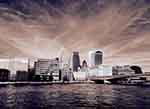
For example, UK exports to exceeded UK imports from Middle Eastern countries by $10.5 billion in 2014.
The fact that United Kingdom earns these country-specific trade surpluses indicates UK competitive advantages albeit for a specific set of export products highlighted below.
Major product supply advantages provide a silver lining for the grim fact that United Kingdom carried the world’s second-biggest trade deficit during 2014, trailing only the United States weighing in at -$726.3 billion.
United Kingdom’s trade deficit in 2014 has decreased by 10.9% since 2010 when its negative balance stood at -$205.6 billion.
United Kingdom Major Product Supply Advantages
- Top 10
- Growth
- Detail
Top 10
Presented in descending order, the following list showcases the general product categories under which United Kingdom earned the highest trade surpluses in 2014.
- Gems, precious metals: US$17.5 billion (50.6% of all product surpluses)
- Iron, steel: $3 billion (8.8%)
- Other chemical goods: $2 billion (5.8%)
- Beverages, spirits, vinegar:$2 billion (5.7%)
- Collector items, art, antiques: $1.9 billion (5.4%)
- Books, newspapers, pictures: $1.6 billion (4.6%)
- Tanning, dyeing extracts: $1.1 billion (3.2%)
- Optical, technical, medical apparatus: $447.5 million (1.3%)
- Raw hides, skins not furskins, leather:$291 million (0.8%)
- Coated textile fabric: $189.7 million (0.5%)
The above top 10 product categories represent 86.8% of United Kingdom’s overall product-category surplus subtotal which amounted to $34.7 billion. For that subtotal, 18 of United Kingdom’s 97 general product categories delivered a surplus in 2014 while the remaining 79 categories incurred deficits.
Growth
Detail
United Kingdom Major Product Supply Advantages by Country
- Top 10
- Growth
- Switzerland
- Ireland
- Hong Kong
Top 10
Presented in descending order, the following list shows with which trade partners United Kingdom earned the highest trade surpluses in 2014.
- Switzerland: US$24.5 billion (30% of UK country-specific surpluses)
- Ireland: $9.9 billion (12.1%)
- Hong Kong: $8.8 billion (10.8%)
- United Arab Emirates: $8.8 billion (10.7%)
- United States: $5.6 billion (6.8%)
- Saudi Arabia: $4.2 billion (5.2%)
- Singapore: $4.1 billion (5%)
- Australia: $2.8 billion (3.5%)
- Azerbaijan: $830.1 million (1%)
- Macedonia: $822.5 million (1%)
The above 10 trade partners represent 86% of United Kingdom’s subtotal surplus of $81.8 billion from the 126 geographic entities with which United Kingdom demonstrated competitive trade advantages. That subtotal excludes the 100 geographic entities with which United Kingdom incurred trade deficits.
Growth
Switzerland
Ireland
Hong Kong
See also United Kingdom’s Top 10 Exports, Highest Value UK Export Products, United Kingdom’s Top 10 Imports and United Kingdom’s Top Import Partners
Research Sources:
The World Factbook, Country Profiles, Central Intelligence Agency. Accessed on December 14, 2015
Trade Map, International Trade Centre. Accessed on December 14, 2015
Investopedia, Net Exports Definition. Accessed on December 14, 2015